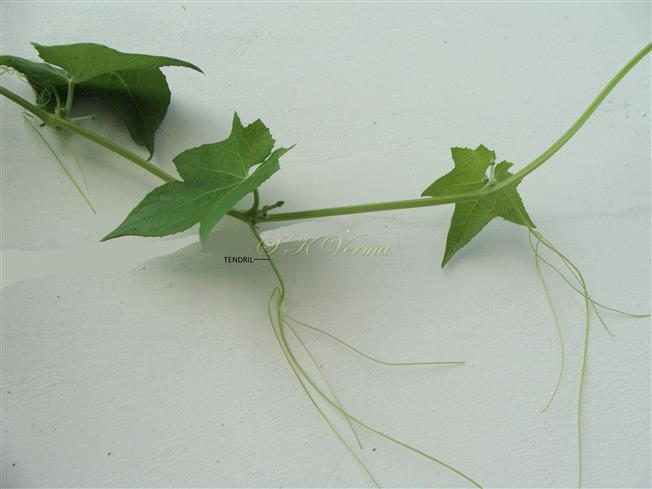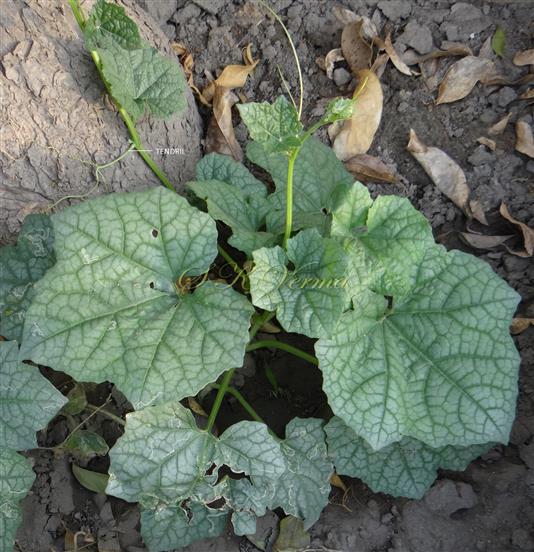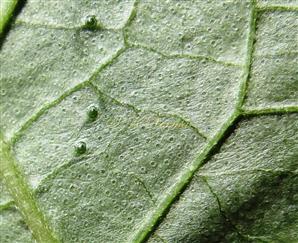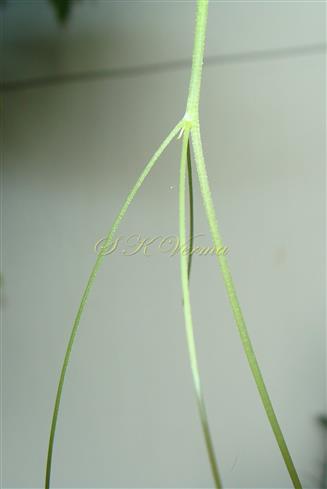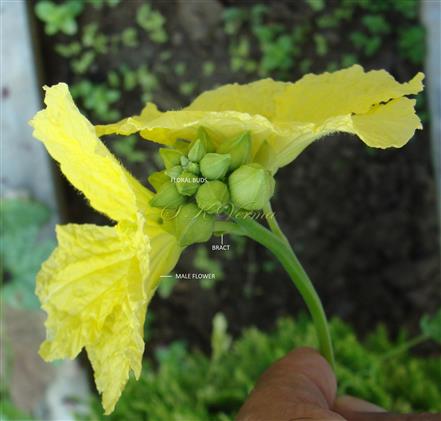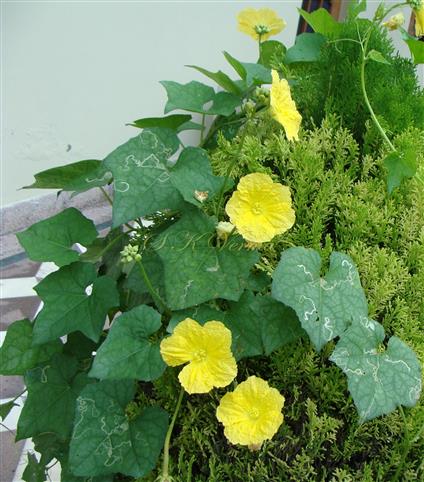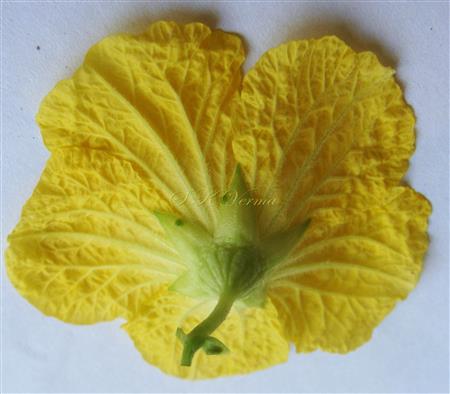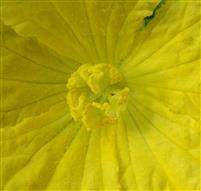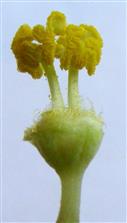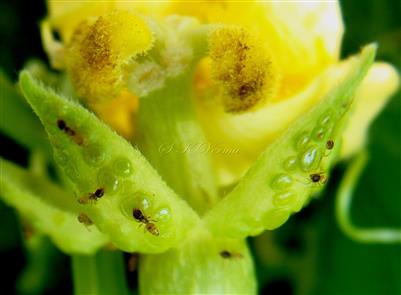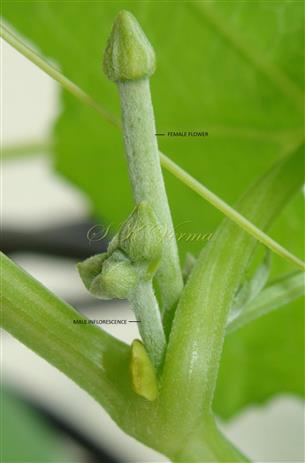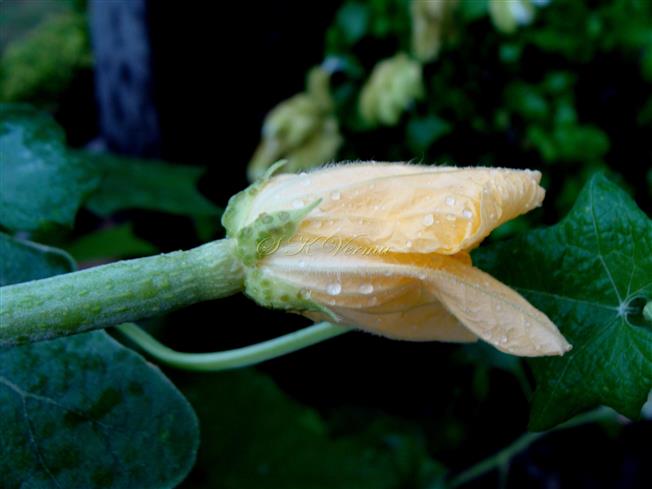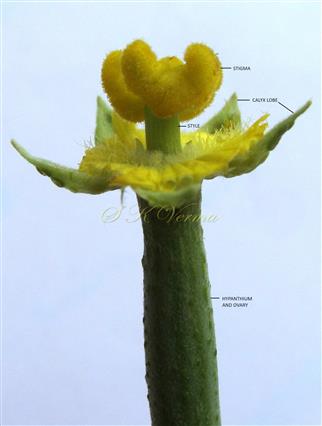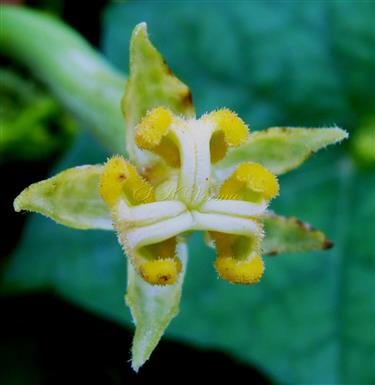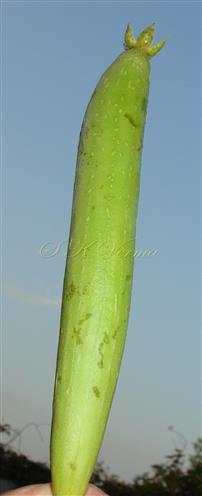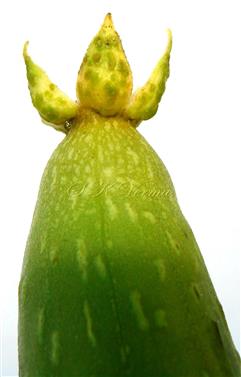LUFFA
Luffa
Mill., Gard. Dict. Abridg. ed. 4. 1754; Benth. & Hook. f., Gen. Pl. 1: 823. 1867; Clarke in Hook. f., Fl. Brit. Ind. 2: 24. 1879; Cogn. in A. & C. DC., Monogr. Phan. 3: 459. 1881; Hutch., Gen. Fl. Pl. 2: 400. 1967; Nazim. & Naqvi, Fl. Pak @ eFloras.org p. 24.
Annual, scandent, climbing or trailing, scabrous or hairy. Monoecious. Tendrils proximally (2-) 3-6-fid, Leaves simple, palmately 5-7-lobed, rarely subentire, lamina sometimes gland- dotted. Petiole eglandular. Flowers unisexual, actinomorphic, epigynous, medium to large, yellow. MALE FLOWERS: (5-)15-20, in axillary racemes. Calyx tube shortly campanulate, calyx lobes 5, triangular-lanceolate, relatively large, enclosing petals in bud, entire. Petals 5, free, yellow, obcordate to obovate, 20-45 mm, rotate or flat. Stamens 3 (5), all 1-celled or one 1-celled and others 2-celled, filaments inserted on the tube, free; anthers free, connective broad, thecae marginal, much convoluted. Pistillodes absent. FEMALE FLOWERS: Solitary. Calyx tube short. Tricarpellary, syncarpous; ovary smooth, ribbed, tuberculate or spiny, 3-6 locular, ovules numerous, horizontal; style one; stigmas 3, bilobed. Fruit medium sized to large, subglobose to elongate- cylindrical, beaked, smooth, ribbed or sparsely to densely spiny with short to rather long spines, brownish, dry and fibrous, dehiscence by an apical operculum. Seeds medium sized, distinctly compressed, oblong- elliptic in outline.
9 species
Luffa aegyptiaca
Luffa aegyptiaca
Mill., Gard. Dict. ed. 8: 500. 1768; Clarke in Hook. f., Fl. Brit. Ind. 2: 614. 1879; Fl. China @ eFloras.org 19: 35; Fl. North Amer. @ eFloras.org vol. 6; L. pentandra Roxb., Fl. Ind. (ed. Carey) 3: 712. 1832; Wight Icon. t. 499. 1841; Momordica cylindrica L., Sp. Pl. 2: 1009. 1753; Momordica luffa Linn., Sp. Pl. 2: 1009. 1753.
An extensively climbing or trailing annual. Monoecious. Tendrils 3-5-fid, slightly pubescent. Stem 5-angled, finely hairy or glabrous. Petiole eglandular, 9-20 cm long, scabrous. Leaf blade 10-20 cm x 10-20 cm, suborbicular-cordate, ovate-cordate, 5-7 palmately lobed, lobes triangular to ovate, margins entire to sinuate to sinuate-toothed, apex acute-apiculate, scabrous, leaf blade gland-dotted beneath. Flowers unisexual, actinomorphic, female flowers epigynous, bright yellow, 5-10 cm across; bracts small, linear and caducous. MALE FLOWERS: (5-)15-20 in 12-30 cm long racemes. Calyx broadly campanulate, 5-9 mm long, puberulent; lobes 5, ovate-lanceolate or subtriangular, ca. 1.5 cm long, densely puberulent, glandular on outer surface. Corolla yellow, 3.5-4 cm long and 5-9 cm across, campanulate; lobes 5, oblong 2-4 cm x 2-2.8 cm, both surfaces pubescent, base attenuate, apex rounded-obtuse or obtuse-apiculate. Stamens 5, free, inserted on calyx tube, filaments 6-8 mm, base white pubescent; anthers 1-celled, connate at first, free later, connective broad, thecae marginal, much convoluted. FEMALE FLOWERS: Solitary in same axils along with male flowers or in different axils. Pedicels 2-10 cm long. Calyx and corolla as in male flowers. Calyx lobes with many conspicuous glands on outside. Tricarpellary, syncarpous; ovary narrowly cylindric, puberulent, 3(-6)-locular, many ovules in each loculus, ovules horizontal; style short, columnar; stigmas 3, bilobed, papillate. Fruit cylindrical, straight or slightly curved, 15-45 cm x 3-6 cm, smooth, dry and inside strongly fibrous when mature, apex operculately dehiscent. Seeds numerous, 1-1.2 cm x 0.6-0.8 cm, elliptic-oblong or ovate, compressed, dull black.
Common Names: Sponge gourd, Loofah, Smooth Luffa; Ghia Tori (Hindi, Punjabi)
